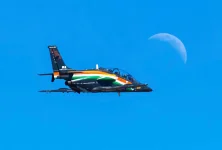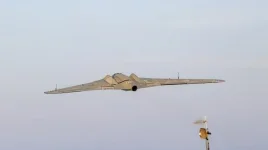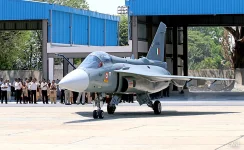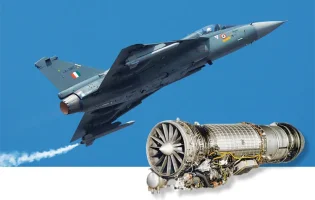- Views: 1K
- Replies: 9

Hindustan Aeronautics Limited (HAL) is poised to reintroduce its HJT-36 Sitara intermediate jet trainer (IJT) with a flying display at Aero India 2025. This marks a significant return for the domestically developed subsonic trainer, which has been absent from the prominent aerospace exhibition for over a decade due to technical hurdles and subsequent delays in its development program.
The HJT-36's history with Aero India has been turbulent. In 2007, a mishap during takeoff, where the aircraft's canopy unexpectedly unlocked, forced it off the runway and cast doubt on its operational readiness. Following further technical issues, HAL withdrew the Sitara from the 2009 edition of Aero India, leading to a prolonged period without public flight demonstrations.
Originally conceived in the late 1990s as a successor to the aging HJT-16 Kiran trainer aircraft, the HJT-36 first flew in 2003. Intended to modernize the Indian Air Force's training capabilities for fighter pilots, the project faced numerous challenges that impacted its development timeline and led to significant delays.
However, HAL appears to have overcome these obstacles. Recent reports indicate that critical design flaws have been addressed, and the aircraft now meets the stringent performance requirements for its role. The HJT-36's return to Aero India 2025 signals HAL's renewed confidence in the aircraft's capabilities and its readiness for operational deployment.
The flying display at Aero India 2025 will serve as a crucial platform to showcase the HJT-36's enhanced performance and reliability to both domestic and international audiences. As a cornerstone of India's indigenous defence manufacturing strategy, the Sitara's reemergence underscores HAL's dedication to developing self-reliant aerospace solutions. This event may also reignite interest in the aircraft for export, potentially expanding its role beyond training within the Indian Air Force.
The HJT-36's comeback is a pivotal moment for India's indigenous jet trainer program. Its success at Aero India 2025 will be closely observed as it represents a significant step towards fulfilling the Indian Air Force's training needs and bolstering India's position in the global aerospace market.
Last edited by a moderator:




